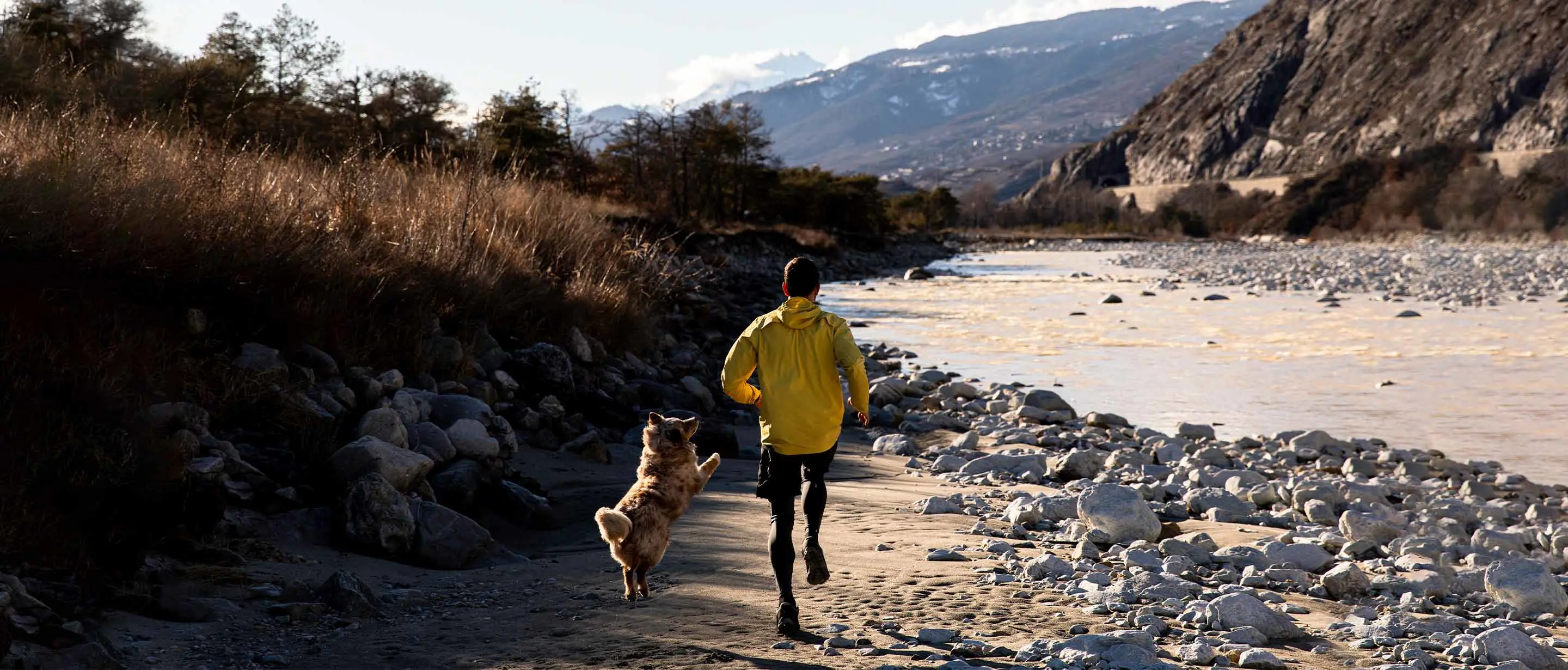

Shared interests make for great friendships, human or otherwise. So for many pet owners, having a dog that doubles as a training partner is a huge bonus.
While your dog benefits from food, regular walks and (hopefully) lots of cuddles, this love is a two-way street. There are countless studies showing the emotional and physiological benefits of having a dog. Dogs offer stress relief and have been known to boost oxytocin levels (our “happy hormone”) so it’s no wonder that combining both exercise and quality time with your companion is bound to reap great benefits.
It’s a common sight to see; a runner going about their business with a happy dog at their feet matching stride for stride. So you have a dog, but how to start running together? If you’re a fit, outdoorsy person, chances are your dog will be full of energy too.
“But I don’t have a dog” we hear you say. All is not lost. Borrow a friend’s or neighbor’s dog. Dog walkers cost money so, really, you’re doing them a favor. Or try a local animal shelter or adoption agency. Getting a dog is a huge commitment so it’s always a good idea to do a few test-runs.
Below, we’ve answered some of the most common questions about running with your friend.
Dogs love to be outside, and if you’re there? Even better. All dogs need daily exercise, plus you’re their best friend so they’ll likely want to join in on whatever you’re doing. If they’re not interested, they’ll let you know.
Their ability to run comes down to breed, age and health. A short online search should offer you plenty of information on your breed’s suitability to run, but always check with your vet since they’ll be able to offer a professional assessment based on your dog’s individual health.
It’s important to wait until your dog is fully developed before bringing them on long stamina-based runs. In their first two years, the development of their bones is crucial in determining their long-term health.
Just as it’s important not to run with a dog too young, it’s also important to consider the other end of the spectrum. Older dogs often have problems with their joints which can be made worse by an activity like running, so take it easy at the beginning. Listen to their body language and if in doubt, get a second opinion from a professional.
Before your dog can run, they need to be able to walk. Discipline and trust are essential to having a safe and easy run so make sure your dog is well trained. (Bonus points for achieving a discipline level that allows for leash-free running.) If you can rest assured that they’ll listen to your commands, then you’re ready to get started.
Just like runners, dogs come in all shapes and sizes. There have been dogs known to keep up with ultra-trail runners, training alongside their athlete owners and finishing marathons with more energy left in the tank than the other competitors. Dogs would never run such great distances in the wild without rest, so training plays an important role.
As a very general rule, the bigger the dog, the longer it can go and the thinner it is, the faster it will be. Of course, every dog – even those of the same breed – is different, so it’s important to gauge their level of capability. Just like with a runner, building up distance over time until your goals are met.
From canine running shoes to pedometers, the world is not short on dog running accessories. That said, the things you'll need when running with your dog comes down to a few key items:
A leash. It seems obvious, we know but even if your dog runs free by your side, having a leash is always a good idea since you never know what’s round the corner.
Waste bags. For when nature calls.
Water. Take in a backpack or attach to a running belt. Your dog should be given water regularly, especially while starting out.
Treats. Reward your friend for their hard work after the run. Plus, they double as an excellent form of bribery should it be required.
Dogs get hot. Unlike humans whose sweat glands are distributed evenly across their entire body, dogs regulate their temperature through their mouths. So, if you have an especially fluffy dog (think Husky or Samoyed) and you’re heading out for a run in the heat, it’s kinder to leave them at home.
Paws. Their natural running shoes are their most important feature. Be cautious when running with your dog along concrete in hot weather and avoid salted paths during winter months. Scratches and cuts are also an indicator that your partner is running on the wrong terrain or running too much, so check their paws frequently to make sure they’re in good condition.
Rest. Make sure they have plenty of time to rest between runs, especially when starting out. Just like a human starting out, they’ll need some recovery time to let their muscles recover before they’re ready for round two.
Public areas. Remember that not everyone is comfortable around dogs, especially dogs running at speed, so be mindful of others as you run. Keep your companion close to you in public areas and have your leash at the ready.
While we love our furry friends here at On, we’re not dog whisperers so always check in with your vet or speak to a professional.
Happy running, four-legged or otherwise.